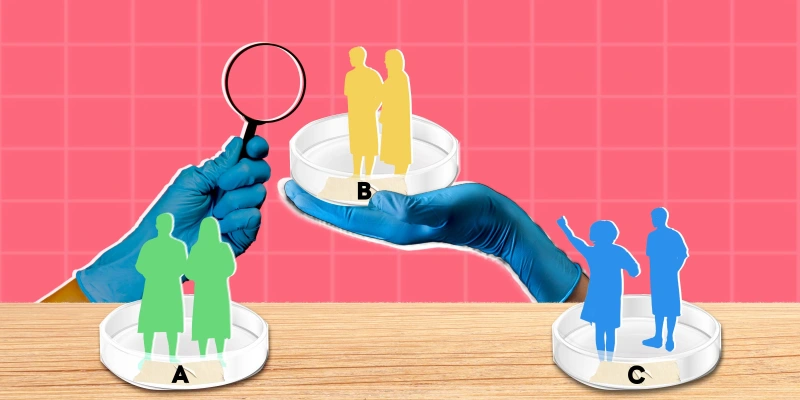“Give me six hours to chop down a tree and I will spend the first four sharpening the axe.” – Abraham Lincoln
ChatGPT and Artificial Intelligence are a current hot topic in medicine. Whether you believe the hype or remain a skeptic, computers in all their forms will only become more important in the practice of medicine. As physicians, we need to be prepared. While you anxiously await or nervously dread the day when a bot can read and respond to all your messages or write your notes, consider taking some straightforward, low-tech steps to improve your digital well-being and cut down on pajama time.
Upgrade Your Setup
It’s Friday afternoon and you’re sitting down for a few hours of admin work. The only thing between you and the weekend is a full in-basket. Imagine that instead of having a computer, keyboard, and mouse to navigate through charts and respond to messages, you only had your phone.
How much longer would it take you to finish?
How much more painful and frustrating would the already tedious task become?
While most of us don’t complete the bulk of our documentation on mobile phones, I have seen numerous physicians working on unnecessarily small computer monitors or laptops, squinting to see crucially important details on a crowded screen. While it may seem like a small detail, the size and number of computer monitors can have a big impact on a physician's efficiency and subsequent well-being.
So, take advantage of lower costs for screen real estate and get a bigger monitor or add a second one. If you find yourself doing a substantial amount of charting on your laptop, get a mouse and consider investing (~$150) on a portable secondary monitor.
One quick note before we continue. While reading you might think, “But this is out of my control.” Do what you can, and share evidence with your leadership about why changes such as these would benefit your organization.
Practice Digital Minimalism
Digital minimalism is about striking a healthy balance between technology over-adoption and rejection. This can involve taking time to adopt a helpful new technology or letting go or minimizing use of an unhelpful one. Take stock of the devices and applications you use and add or subtract where necessary.
On a more straightforward level, unsubscribe from unnecessary emails and turn off unhelpful notifications. Momentary breaks of focus when a device buzzes or beeps add up. Doing this helps limit context-switching and conserves uninterrupted focus time.
Other suggestions include developing boundaries and guidelines for how different modes of communication should (and should not) be used. This could help if “thank yous” are filling up your inbox. In a similar vein, take advantage of features like “do not disturb” hours or “schedule send” to limit when you interact with different digital systems.
Set Expectations and Standards For Patients and Digital Communication
Instead of charging for MyChart messages, physicians might consider communicating to patients what sorts of issues can be handled via messaging, and what would require a longer appointment. Further, patients should be guided regarding the best way to structure their message to facilitate a helpful response. This sort of approach could help avoid receiving huge blocks of text ending with, “thoughts?” Be intentional about how quickly you reply to messages and utilize features like delayed delivery to discourage after hours messaging.
Delete [Or Archive] Old Messages
Whether it’s on your phone, your email, or in the EHR, seeing that you have 2,473 unread messages is a mental burden. Take messages older than a certain date and delete or archive them. It will feel good, I promise. Some health systems have experimented with this on an institutional level, deleting all messages older than a certain date, which has cleared up significant digital (and mental) space.
Continually Evolve Your Documentation
Documentation burden is a huge issue. Organizations efforts like AMIA’s 25x5 taskforce and the ACP’s Patients Before Paperwork initiative are attempting to address this. In addition to fighting regulatory battles and trying to improve the technology, such initiatives offer resources on how to improve one’s own documentation on a personal level, like these examples for generalists or specialists. The AMA has an entire online course around EHR and Technology that is eligible for CME credit. Keep up with and support these initiatives to ensure that “less documentation be[comes] the norm rather than more.”
Learn your EHR
Modern EHRs are highly customizable. Views, workflows, templates, macros, and numerous other features can be customized to the preference of the user. Customization requires time, but even small improvements can have a substantial effect in the long-term. Most institutions also provide office hours and tip sheets to help physicians master the ever-evolving nuances of their particular system.
Take advantage of new EHR features like using mobile or tablet versions to take HIPPA-compliant pictures or document scans that can be uploaded to the chart. Finally, realize what the EHR is not and consider technologies that may fill the gap.
Participate In Technological Innovation
There are physicians out there (clinical informaticists) who want to make your digital lives easier. However, they might not think like you, your specialty, or your office. They need your feedback. Consider filling out their surveys and participating in their pilots. Technological expertise is not required.
In a world of rapidly changing technology, this is an ongoing effort. My invitation is to set aside reoccurring time to reflect, optimize, and sharpen your digital axe.
What do you do to sharpen your digital axe? Share in the comments.
Matt Allen is a medical student at UC San Diego interested in improving the relationship between clinicians and computers.
Image by Alphavector / Shutterstock







